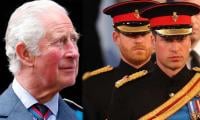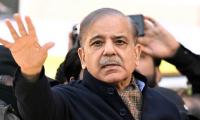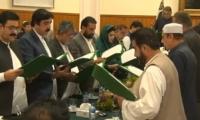The ongoing dialogue between the Zalmay Khalilzad-led US team and representatives of the Afghan Taliban - erstwhile rulers of Kabul, pushed into rebellion, and frequently labelled as terrorists – has generated diverse reactions both within and outside Afghanistan.
On surface, there are more factors going against a peaceful resolution of the ongoing conflict as compared to those leading to a smooth transition. The sceptics fear that there are so many details to be hammered out that the dialogue may drag on and lose its momentum. There is also the possibility that, disillusioned over the chances of success, the US may determine its own timetable to withdraw the bulk of its forces in Afghanistan, with other partners of the multinational force following suit. A kind of no deal exit.
Yet, in his State of the Union address to Congress on February 5, US President Trump expressed cautious hope for a negotiated end to America’s longest war. He termed the US-Taliban talks as constructive, hinting at “a possible political solution to this long and bloody conflict.” Trump might have cringed over following the script rather than drifting to his usual hyperbole. But what he spoke is the reality, that of a “possible political solution”.
Trump was more voluble in his TV interview with CBS when he did not hesitate to express his feelings about America’s global military profile. In doing that, Trump tried to remove some ambiguities about the continued presence of US troops in Iraq, Syria and Afghanistan. In a marked change of tone from his predecessors, Trump talks not of the US’s role of leading the world but of the cost in blood and money of endless wars.
Considering that the US economy has been closely linked to its global hegemony and the means required to maintain that, Trump is aiming at a paradigm shift. Before going into his campaign for re-election in 2020, Trump wants to show how massive resources can be diverted from endless wars to rebuilding America, a promise made in his 2016 presidential election.
To recap, Trump said that the 2000 US troops in Syria would leave “in a matter of time” which is a change from his earlier announcement of a quick withdrawal. But the US would not give up its “incredible base” in Iraq that had cost a fortune to build, to continue spying on Iran which poses “a real problem”. Israel’s security and Iran’s nuclear ambitions provided Trump the link to maintain the state of the art US base in Iraq.
Pakistan is closely following Trump’s loud thinking on Afghanistan after the US president had to cool his immediate troop withdrawal plan in view of the assessment by intelligence chiefs that a precipitous pullout from both Afghanistan and Syria could allow resurgence by Al-Qaeda and the Islamic State. In his CBS interview, Trump also stressed that everybody including the Taliban are tired of the war in Afghanistan and desire peace.
Trump made a connection between his plan to withdraw most of the US troops from Afghanistan with the Taliban’s desire for peace but clarified that the US would retain its intelligence apparatus in the country to watch the evolving situation, and if “I see nests forming, I’ll do something about it”. Conclusion: America will respond if any threats to its security emerge in Afghanistan…but no mention was made of the risk of that country ending up in chaos after international forces leave, before becoming an incubator of militancy of different hues.
The Americans and their close allies may not be happy over Moscow’s persistent efforts to provide an alternative schema for peace in Afghanistan, with the Taliban taking centre stage. The country’s former president Hamid Karzai was in attendance as were many other known players; talking, eating and praying together, bypassing Afghan President Ghani. The Taliban showed new confidence by sharing their vision of post-America Afghanistan. They also claimed that the US had begun to withdraw troops and their number would be reduced to half by end April. Washington, however, has given no details of a withdrawal calendar.
Khalilzad has instead been insisting that “nothing is agreed until everything is agreed and that includes an intra-Afghan dialogue and comprehensive ceasefire”. The Taliban, on the contrary, have repeatedly rejected the existing constitution and they refuse to talk to the government emanating from that constitution. As a result of President Ghani’s lobbying, the US administration and its top generals have reiterated support for Kabul government’s participation in the peace talks.
Taliban spokesmen have talked of giving up their monopoly on power as a gesture of reconciliation but have insisted on a new Islam-based constitution for Afghanistan. They have also promised to loosen some restrictions on women. Encouraging signs of recognition of a pluralist system with women enjoying at least some rights? Maybe, but their refusal to talk to the existing setup in Kabul which is resisting the Taliban’s drive to capture more areas could be the stumbling block to progress towards transition to a new political order.
There may be different scenarios of how the Afghan peace process might evolve in the coming months. The elephant in the room in all cases is the unabated violence by the Taliban, directed at decimating Kabul’s security forces. The recent attacks in Wardak and Kunduz illustrate how the former rulers intend to take over the country. This trend also raises the question of whether the Taliban’s message of reconciliation would be followed up by actions on the ground. Contrary to Trump’s claim that everyone is tired of the war in Afghanistan, it seems some are more tired and some are ready to battle on.
Email: saeed.saeedk@gmail.com
A woman walks past a building of the International Monetary Fund. — AFP/FileThe annual and spring meetings of the...
Late Benazir Bhutto's daughter Asifa Bhutto Zardari addresses the Christian community in Bihar Colony on January 23,...
Representational image. — PexelsWater is an important scarce natural resource that is required for several everyday...
Pakistani employees of online marketplace company Kaymu at work in Karachi. — AFP/FileThe true spirit of development...
India uses Afghanistan as a backstage area to carry out terrorist attacks against Pakistan
Another report by the Pakistan Institute of Peace Studies states that 78 per cent of attacks have been carried out by...







